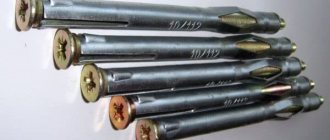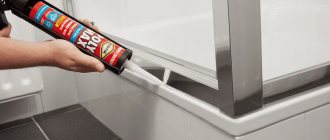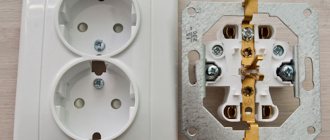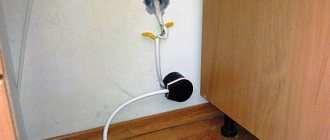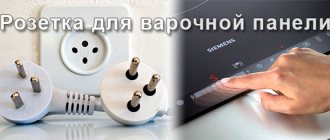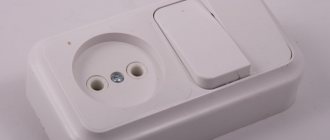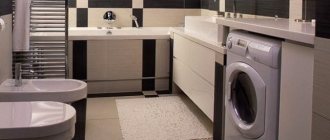Sockets in the kitchen are extremely necessary, unfortunately, sometimes where they fit best, but installing them in such a place is not always possible. A socket that is hidden in the countertop has many advantages.
Hence the growing popularity of this solution. This is a functional solution and also has a positive effect on the aesthetics of the room. However, it is important to know what to consider when choosing such an outlet.
Operation and care
When using a socket block, it is useful to follow several rules:
- Do not turn on a load higher than the rated load. This will cause the contacts to heat up, which in turn will lead to melting of the plastic elements or a fire.
- You shouldn’t push/pull out the socket block too much - then it will last longer.
- When connecting an electrical appliance and when removing its plug from the socket of the unit, the latter should be held by hand.
If the following symptoms occur, the unit is repaired or replaced:
- heating at rated load;
- sparking;
- the appearance of an unpleasant odor.
This indicates a violation of one of the contacts, as a result of which it sparks and heats up.
Care consists of the following actions:
- From time to time, the unit body and lid are wiped with a damp cloth, after first de-energizing the product.
- If seized, the spring mechanism may need to be lubricated with a small amount of oil.
A socket block is essentially the same as an extension cord, only it is always ready for use and installed hidden. The interior does not lose its attractiveness, while at the same time the problem of finding a free outlet for turning on electrical appliances is solved. Using the tips outlined above, the reader will be able to correctly select and install this product.
What types of kitchen sockets are there: 4 popular types
There are several types of sockets that are widely used in the process of arranging a kitchen space. Let's look at the advantages and disadvantages of each solution:
overhead sockets are the simplest type, which are widely used in rooms, but are not very well suited for the kitchen. On the one hand, they are the most affordable and easy to install. But at the same time, they are more suitable for open wiring;
Modern types of sockets allow you to decorate the kitchen interior not only conveniently, but also with style.
- corner sockets for the kitchen - this option is especially convenient. Such elements can be placed at the junction of walls or a wall and a wall cabinet. In this case, you can purchase single or modular structures that consist of two or more parts. Installing them is no more difficult than the most ordinary surface-mounted sockets, and it is also worth buying corner sockets for the kitchen because they allow you to make good use of space that is usually empty;
- retractable sockets are a more advanced option, which is a worthy alternative to extension cords, and allows you to simultaneously connect several electrical appliances. They are usually hidden in a countertop or cabinet to protect them from dust and moisture;
- built-in or hidden sockets are the most aesthetically pleasing of all possible options. This usually looks like a block of several sockets that is built into the countertop. What adds to its attractiveness is that the block is usually not visible until you need it, and with a light press it slides out, allowing you to connect devices.
One of the modern gadgets in the kitchen is a modular unit with moving sockets
Socket diagram in the kitchen: how many of them do you need?
It is not difficult to calculate the number of sockets required for the kitchen. All you need to do is think about what electrical appliances you will use and make a reserve of about 20-25%. Basically, the list of required electrical appliances that require power from an outlet is as follows:
- hood;
- the stove, if it is electric or has electric ignition (sometimes the gas surface is equipped with an electric oven);
- large household appliances, which include a refrigerator, washing machine, and sometimes a TV;
- small and built-in appliances such as microwaves, kettles, etc.
The number of outlets in the kitchen must be calculated in advance, considering how many appliances will be used
Having counted all the items, add a reserve that will allow you to easily use those devices that may appear in the future. Of course, additional sockets are additional expenses, however, you should understand that in the future you won’t be able to simply add the missing ones, and in the best case you will have to use extension cords, which will only create discomfort.
Socket protection
The most popular connector types are IP44 and IP54. Markings on electrical accessories indicate the degree of protection of the device from external influences. The first digit determines the class of protection against solid particles (dust), the second - against humidity. The higher the number, the better the connector's security.
The most common devices in domestic conditions are IP44 type. They are protected from the ingress of particles with a diameter of more than 1 millimeter, and the housing is waterproof.
With the plug inserted, the socket protection class is IP44, and without the plug with the cover closed - IP54
Hidden sockets for the kitchen are most often classified as IP44. A more protected IP54 level is required in areas exposed to heavy dust. In all other cases, this level of protection will be unnecessary.
To protect against the ingress of solid particles and moisture, the devices are equipped with plastic casings, additional caps and rubber gaskets. It should be understood that neither IP44 nor IP54 will be able to withstand environmental factors in a cement warehouse or car wash. In these situations, devices with a higher level of security will be needed.
Features and advantages of built-in sockets
In terms of electrical parameters, sockets hidden in a countertop or cabinet differ little from ordinary ones. Their main advantage is different: when folded, the socket block is hidden inside a table or any kitchen furniture. In this case, the surface of the tabletop can be used as usual with some restrictions.
If you need to connect any household appliance, the built-in sockets are easily removed from their hiding places, and then just as easily put back, as in the photo below.
Thus, their use brings the following benefits:
- Electrical safety is increased due to the absence of easily accessible wires. All electrical wiring is securely hidden inside the kitchen furniture and is difficult to damage or get caught on.
- The likelihood of moisture or dust getting inside the sockets is reduced.
- Secret blocks are more protected from access by small children.
- When retracted, the devices save free space in the kitchen, for example by increasing the working area of the countertop.
- Many models are equipped with additional connectors for connecting electronic devices, such as USB ports.
- The original design of sockets built into the countertop organically fits into modern kitchen interior design styles.
However, these devices also have disadvantages:
- They are not suitable for connecting stationary appliances such as a refrigerator or TV. Hidden sockets are used to temporarily power mixers, electric meat grinders, and laptop chargers. It is impractical to keep them open all the time: it is much safer in such cases to use stationary, securely fixed sockets on the wall.
- Although the surface of the countertop appears solid when the devices are recessed, it is necessary to remember their presence. You can put some object on them, but cutting or placing wet vegetables or fruits is hardly worth it.
- Placed in hanging drawers, such devices save space in the kitchen, but at the same time take up space inside the furniture. For a countertop this is not so critical, but in a hanging drawer, drawers can take up a significant portion of the volume. The device inside the cabinet is in the next photo.
In addition, certain types of such sockets have their own weak points. But we'll talk about them later.
Conclusions and useful video on the topic
More detailed information about choosing a location for mounting the socket and about installing the network unit itself can be found in the following video:
The built-in socket is an ergonomic and multifunctional device. Such a network unit can be easily integrated into any interior. You just need to carefully consider its location relative to the main electrical appliances in the kitchen, taking into account maximum ease of use.
Following the step-by-step instructions, you can build a socket into the countertop with your own hands. The recommendations given in the video and article are relevant for network blocks of any brand. They can be used to install built-in sockets in the kitchen.
If you have already installed smart plugs in your kitchen and are actively using them, we and other visitors to our site would be happy to hear about your experience. Please share your impressions of use - the comment form is located below. Also here you can add original photos of your built-in socket, talk about what difficulties you encountered during installation and how you were able to overcome them.
Built-in sockets in the kitchen interior ↑
Built-in socket blocks are a modern and convenient solution for any room. The kitchen is no exception. Such electrical sockets are nothing more than well-known extension cords that are “recessed” into the surface of a particular piece of furniture. In the kitchen, a countertop or the bottom of a wall cabinet serves as a work surface.
Built-in structures are divided into two main types: stationary and retractable.
Stationary models are installed in the selected plane without the possibility of changing position. Sockets are protected from debris and moisture by covers. To connect a household appliance, just move it aside. This is the main disadvantage, since the lid hides free space on the table.
Fixed built-in socket block
Retractable models do not have these disadvantages. When not in use, you can only see the block cover - its upper part, which looks extremely laconic and aesthetically pleasing, protruding only 1-2 mm above the surface of the piece of furniture. But you just need to press the lid itself, the recess on it, or a button located nearby for the retractable mechanism to work. It pushes out the block in whole or in part.
In the second case, you need to apply a little force and pull it out to the end. The sockets presented to your attention will be completely ready for use. To remove them, it is enough to “sink” the structure into a piece of furniture by pressing the same lid.
Installing a pull-out unit in the bottom of a cabinet
Retractable socket blocks can be vertical and horizontal. There are no fundamental differences between them, but vertically oriented models tend to loosen faster with regular use. Horizontal ones, in turn, can create inconvenience when using angular forks.
Vertical retractable socket
Horizontal pull-out unit in the tabletop
Built-in socket blocks are a solution for the modern kitchen and practical housewife. Their advantages can rightfully be considered:
- Expanding power supply capabilities for small household appliances.
- There is no need to constantly look for a free outlet and connect household appliances to the network alternately.
- Minimizing the number of sockets installed on the walls and spoiling their appearance.
- Easy to install. It's easy to do it yourself.
Disadvantages of retractable sockets:
- Suitable only for temporary connection of devices.
- They cannot be installed on an area of the countertop that has drawers or panels underneath.
- They must be held with your hand when connecting and removing the plug so that the unit does not become loose.
- High prices for truly high-quality products from well-known manufacturers.
For ease of installation, retractable units are manufactured with a plug. Its presence greatly simplifies the connection of such an original extension cord to the electrical network. All you have to do is follow these steps:
- For safety reasons, turn off the power supply and wear non-conductive rubber gloves.
- Determine the installation location of the block.
- Using the included template, make a hole in the countertop or the bottom of a wall cabinet.
- Using the fasteners also included with the socket block, secure it in the hole.
- Connect the product to the network.
Installation of a GTV pull-out socket block
As you can see, built-in units are easy to install yourself. It is recommended to discuss the remaining points with an experienced electrician, who can not only perform all the work, but also give competent advice on equipping the kitchen with household electrical appliances.
Installation rules
When installing retractable sockets, you must adhere to several basic rules.
It is strictly forbidden to install blocks near the stove and near the sink. A short circuit can be caused by moisture and elevated temperatures. Sockets must be installed at a distance of at least 60 cm from the sink and stove.
The process of installing hidden sockets
Installation of a built-in retractable socket in a tabletop
Installation of retractable socket blocks is not difficult; home craftsmen can do it themselves without difficulty.
Algorithm of actions:
- De-energize the room.
- Mark the installation location of the block.
- Using a crown saw or jigsaw, make a hole (diameter 65 mm) for mounting sockets in a table, cabinet or countertop.
- Secure the device using the fasteners included in the kit.
- Connect the unit to the network.
If you do not have the necessary tools at home, it is better to seek help from specialists.
Selecting a device location
A retractable vertical socket is mounted in a corner wall cabinet.
Retractable sockets are best installed in the following places:
- In the work areas of countertops and tables where food preparation occurs. The optimal solution here would be to install a block with 4-5 network connectors.
- In eating areas and canteens.
- A vacation spot for the whole family. Here, the most rational option would be to install socket blocks with combined connectors, with USB and HDMI. This will allow you to connect phones and laptops to the network and the Internet.
The placement of each retractable block must be thought out in advance. This will save owners from situations when one block is not in demand and the other is overloaded.
Peculiarities
There are certain rules for installing sockets, dictated by ease of use and safety precautions. It is considered optimal to place sockets in such a position that all kitchen electrical appliances can be placed on three levels:
- lower;
- average;
- top.
The lower connection level includes appliances such as a washing machine, dishwasher, oven or electric stove.
The middle tier contains household appliances that can be placed on the countertop:
- coffee maker;
- Electric kettle;
- toaster;
- blender;
- electric oven;
- microwave;
- multicooker.
The countertop has sockets for mid-level appliances. They can be recessed into the working surface of the table or placed on the apron. This is the most popular option for installing built-in units in kitchen furniture.
Option 1 – On the wall
The most popular and usual place for placing an outlet of any type is a wall. To correctly remove power from an electrical appliance or household appliance, the following steps should be taken:
- Determine the location for the future outlet, draw its outline on the wall.
- If there is no wiring near the selected location, then it is necessary to supply electricity: find the nearest distribution box and a suitable machine, identify the phase wire, cut a channel from the panel to the designated location, lay the wire.
- De-energize all rooms by turning off the panel or unscrewing the plugs.
- Make a neat hole in the wall of the required size using a drill with an attachment, drill bit, chisel and hammer.
- Install the socket box and secure it with plaster, cement or plaster.
- After the solution has cooled, it is necessary to level the surface and sand it.
- Pull the wires out through special holes in the box.
- Strip the phases of the conductors a few centimeters, connect the contacts of the socket and the shield.
- Seal the groove with plaster.
- Secure the decorative part to the box with special “claws”, latches, screws or screws.
- Check the functionality of the device.
- If necessary, equip with additional elements: protection, cover.
Designs and types of built-in sockets
In general, there is no point in a built-in outlet if it is simply one piece with a countertop or other surface. There is another type of such sockets - retractable. These designs are worthy of our attention. There are several types of them:
- retractable horizontal;
- retractable vertical from the tabletop;
- built-in rotary.
Let's take a closer look. Each type of these devices is a block of sockets necessary for power electricity, USB connectors, antenna connectors or other connectors necessary for teleradiocommunications, computer and other networks.
A vertical socket that extends from the tabletop is the most popular, but not particularly practical type. At the same time, the block is pulled out from the table, and after connection it all remains in all its glory on the table. And it’s very easy to accidentally break such a tower.
In addition, in order to insert the plug, you must apply some force, while for the design this does not go unnoticed. This means that its resource is greatly limited by the owner’s temperament and the number of connections. You can constantly support the socket when turning it on with your hand, but this is completely inconvenient. Therefore, having broken such towers, many go to use rotary structures.
Comments:
Vasily Ivanovich
I installed such a device for one customer and it turned out that it was inconvenient to use. You don’t want to get out hidden sockets, it takes time and you use those in the wall, not in the table.
Stas
In the kitchen, this thing will only work if it is located in a “dead” corner, but then what good is it if it is always open? In the “closed” state it eats up space inside the shelf, and in the open state it eats up space on the table. In general, a toy for 10 minutes.
Maria
I have one of these in my kitchen – it’s absolutely useless. When closed, it is still not sealed; water flows from the countertop directly onto the contacts. In general, it's still fun. You can't cut anything on the plastic lid, you can't put anything on it, it's even inconvenient to wipe it, because... when pressed, it springs and opens immediately
Igor M
On the contrary, we like everything, especially the fact that you can hide the column in the table with the forks stuck in. At the same time, the entire cable bundle goes there too
Dmitriy
Igor M, is this for the employees of “Electrics in the House”?
Marinika
I agree with Maria, if you build it into a countertop, it’s unlikely to be convenient. But in my top cabinet, and I connect there only when necessary, a mixer, food processor, juicer, electric knife, meat grinder, in general, everything that is not constantly connected to the network in the kitchen. Very convenient and undamaged by sockets.
Leave a comment Cancel reply
Related Posts
Connection diagram for a pass-through switch from three places - features, as well as installation sequence
How to select and connect a differential machine
How to choose the right machine according to the load power for an apartment. How do ABB automatic machines differ from their competitors?
Types and features of retractable sockets
Built-in sockets in a tabletop - a block of 2 or more sockets, mounted in a metal or plastic case, which is equipped with a retractable mechanism. The device is removed from the tabletop by light pressure and is just as easily immersed in it when pressed. A device of this type is a kind of surge protector, but it does not have bundles of wiring that are not so aesthetically pleasing. The modern market offers users several types of retractable devices.
Vertical retractable socket for table top
Vertical retractable socket
This type of socket is used most often. At the same time, their design is not the most practical and durable, since the “tower” rising above the tabletop can be accidentally touched and easily damaged. In addition, the retractable vertical block is subject to loosening, because when inserting the fork you need to apply some force.
Horizontal retractable socket
It differs from other retractable devices in the horizontal placement of the socket block and the height indicator of the retractable part. This design has high strength and is also more convenient to use. Horizontal blocks also have a significant disadvantage - the problematic connection of equipment with side-type plugs.
Pull-out rotating socket block
Pull-out rotating socket block
Built-in rotating sockets are the most versatile among retractable designs. They are ideal for arranging kitchen worktops, therefore they are very reliable and demonstrate a high level of ergonomics. The rotary blocks are tightly fixed in the plane and withstand frequent insertion/pulling out of forks, which means they are durable.
Unlike traditional pull-out blocks, this design is equipped with a rotating mechanism. It is triggered by pressing a finger on a certain area of the front cover. After opening the sockets, the device is fixed at an angle of 45 degrees.
Based on the type of installation, rotary blocks are divided into 2 types:
- mortise – installed directly into the plane of the tabletop;
- corner – mounted in 90-degree corners (wall joints, wall/wall cabinet combination).
Hidden sockets
Socket built into the tabletop
The hidden block of sockets is considered the most reliable and durable, since it is devoid of movable mechanisms. In essence, this is a classic extension that is recessed into the furniture body or the plane of the countertops. Such devices are unable to change their position. A decorative cover protects the unit from penetration of dust and moisture. To connect electrical equipment, the cover must be lifted up or moved to the side. This is the only disadvantage of hidden devices - the cover hides space on the work surface.
Advantages and disadvantages
An illuminated socket block can serve as a night light.
Retractable socket blocks are becoming increasingly in demand in modern interiors, as they have a whole set of undeniable advantages:
- High versatility.
- Do not take up space on the work surface.
- Suitable for connecting small kitchen electrical appliances that are not constantly used.
- There are models on the market that are protected from moisture and dust. There are also devices with a child lock feature.
- An ideal combination with any interior style.
- Possibility to choose between vertical and horizontal blocks.
- Availability of additional connectors, for example, USB or HDMI.
- Possibility of mounting on any surface – table/table top.
In addition to a lot of advantages, the devices have several disadvantages:
- Quite a high cost.
- When installed in a hanging cabinet, its internal volume is hidden.
- Impossibility of installation in areas of the countertop where there are drawers underneath.
- Vertical blocks can be easily damaged due to their height.
All the shortcomings of retractable sockets are compensated by their versatility. The non-working block is invisible to the naked eye; its shape resembles an ordinary decorative ring/rectangle on the table surface.
Power and current
If you look at the outlet itself or its packaging, you will see one of two ratings: 10A or 16A (which is 2.2 or 3.5 kW, respectively). True, these figures only work in theory, but in practice, from the constant connection of such powerful devices, even the best outlet will overheat and become unusable.
Electricians warn: under no circumstances plug into the same outlet electrical appliances whose total power exceeds its permissible limit. So, if your outlet has a 10A rating, and you want to plug in a microwave (0.8 kW) and a kettle (2 kW) at the same time, this idea will not end well.
When calculating power lines, it is important to provide a double supply for all kitchen appliances. Don’t forget to calculate their power parameters in advance and draw the necessary conclusions
Tips and tricks for locating and installing sockets
When installing electrical wiring and sockets in the kitchen, it is worth considering some subtleties, knowledge of which will help protect against network overloads, short circuits, and overheating of the surface of the sockets:
If possible, it is better to install sockets at a distance of 2-2.5 m from each other; when determining the type and number of sockets above the work surface, it is worth deciding in advance what devices will be used here; It is better to carry out all types of electrical work at the repair stage before finishing work;
Sets of built-in household appliances should be provided with a separate RCD (residual current device). It reliably protects against fire due to insulation failure and against electric shock; it is necessary to provide a separate socket for connecting additional lighting sources;
the kitchen should have a sufficient number of sockets, external, built-in, pull-out, overhead. Installation can be carried out in wall and floor cabinets, drawers, in a countertop or dining table. With built-in furniture, it is more convenient to use internal sockets; for a washing machine and a built-in dishwasher can be divided into one group if there is a differential circuit breaker rated at 20 A or an RCD with a total power of no more than 4 kW. However, you cannot turn on two of these devices at the same time;
given that the power consumed by the refrigerator is not very large, it is advisable to allocate a separate line for it; When installing a free-standing tabletop oven, the sockets should be placed in the space under the oven at a height of about 10 cm from the floor level.
Choosing a reliable electrical wiring diagram, purchasing modern sockets, RCDs and additional accessories for installation will require certain costs. Read how to connect a ceiling island hood here.
New sockets may require reliable and safe wiring, which must be done before finishing work and installing furniture.
But no matter what your kitchen is, it still has several outlets, even if it doesn’t see them
There are never too many sockets. The more power points for those devices with which any kitchen is saturated, the better. And if they are reliably protected from liquid and dirt, installed and located in the most rational places for this, and access to them is always open, your kitchen can be considered ideal. As part of this topic, it is useful to read about what built-in sockets are in a countertop, in an apron, and about the sizes of dishwashers.
Installation instructions
Electrical installation work is carried out in the following order:
- Turn off the power supply to the room.
- We mark with a marker the place where the fittings will be installed.
- We make a niche in the wall for an outlet. To do this, use an electric drill or a hammer with a chisel. The type of tool chosen directly depends on the wall material.
- The niche should have as smooth edges as possible, this will make it more convenient to install the box in which the inside of the socket and wires are located.
- At the bottom of the installation box there are a pair of holes through which the wire strands pass.
- To secure the socket box, we plaster the joining areas. You can also use gypsum glue or building plaster. It is necessary to close all the cracks so that the box is in full contact with the wall. The consistency of the applied material should resemble plasticine.
- When the putty hardens (after 15-20 minutes), you can continue working. However, first you need to remove the remaining plaster and level the surface.
- Fixes the wire in the installation box with a clamp. This will make further installation easier.
- We strip two or three cable cores a couple of centimeters. We connect the contacts of the block with the cable from the electrical network. First we connect the zeros, then the phases and grounding. The contacts are located at the top, the wires are located at the bottom.
- The wires are fastened with screws and a spring mechanism. We leave the excess wires at the bottom of the socket box.
- We fix the blocks on the socket box. To do this, you can use one of two methods. The first option involves the use of sliding tabs that secure the screws to the connector. In the second case, fixation is carried out with screws passing through the socket and socket box.
- When the socket box is installed, we mount the plastic case and also check the socket for functionality.
How to correctly arrange sockets for each type of household appliance
oven, dishwasher, refrigerator and washing machine
If an oven or microwave oven is built into a cabinet, that is, above the level of the countertop, then electrical sockets should be installed in height below or above the equipment, and in width, they must be behind the cabinet for installation.
It should be noted that sockets for built-in appliances can be mounted at the height of the headset legs, this will avoid cutouts in the cabinet walls. But the fact is that many household appliances simply do not have enough cord length for such an arrangement.
It is better to install the socket for the refrigerator to the left or right of the refrigerator, depending on its location relative to the kitchen unit, at a height of 91 to 132 cm from the floor to the bottom of the socket, in the “apron” area. In this case, the socket will not fall on the countertop or wall edge. At the same height it is convenient to install electrical sockets for small household appliances located on the countertop. You should not install an electrical outlet behind the refrigerator, as in this case it will protrude in front of the furniture, which is unsightly. It would be unlucky to locate the outlet for the refrigerator behind one of its side walls, since this outlet is inconvenient to use and “eats up” such valuable space in the kitchen.
Sockets in the kitchen
It is important to remember that sockets should never be mounted directly above a hob or sink for safety reasons. The outlet for the hood is most often installed above wall cabinets, that is, with a standard kitchen height, at a level of 240 cm from the floor to the bottom of the outlet
Here again we should remember that the electrical outlet should not get behind the hood itself. Many electricians advise connecting the hood to the network directly, using wires, without installing sockets. This connection option has only one advantage - aesthetics.
The outlet for the hood is most often installed above the wall cabinets, that is, with a standard kitchen height, at a level of 240 cm from the floor to the bottom of the outlet. Here again we should remember that the electrical outlet should not get behind the hood itself. Many electricians advise connecting the hood to the network directly, using wires, without installing sockets. This connection option has only one advantage - aesthetics.
Surface mounted sockets under cabinets above countertops
The easiest and cheapest way to hide them from sockets so that they are not conspicuous and save space is to install regular overhead sockets on the bottom of a hanging cabinet. This is done very simply:
- Behind the hanging cabinet, wiring is pre-installed in the wall;
- The end of the wire is inserted into the cabinet through a drilled hole in the rear wall and out through a drilled hole in the bottom;
- Under the cabinet, overhead sockets are screwed to the bottom using ordinary self-tapping screws and connected to the wire.
Examples of installing overhead sockets under cabinets above the countertop
Tip #1. It is recommended to match the color of the socket body to the color of the cabinets, in which case they will be less noticeable.
Selecting a socket block
The socket block is selected according to several criteria.
Number of modules and permissible power
The number of sockets and other connectors is selected according to how many devices are planned to be turned on simultaneously. Users highly appreciated the modular blocks, which allow you to add or remove connectors at your discretion. When selecting power, sum up the powers of all simultaneously switched on devices and add a margin of 50–100%.
Manufacturers
Due to the presence of moving elements, a built-in unit with sockets is demanding on the quality of workmanship, therefore, when purchasing, it is especially important to choose one of the well-known, well-established brands. There are also such among suppliers of inexpensive products, for example, Russian and Polish GTV
GTV produces built-in sockets in various configurations
The following companies are considered the flagships of the industry:
- Schulte Elektrotechnik (owner of the Evoline brand, Germany) - products from this manufacturer are designed according to a modular principle;
- Legrand (France) - blocks of this series are notable for their modular design. The user assembles the product himself, installing the required number of power sockets, USB ports and HDMI connectors. The Legrand company supplies built-in retractable socket blocks of the DLP series to Russia. The largest ones have 8 sockets. The block comes with lids of various colors - from white to gold;
- Kondator (Sweden) - the company introduced to domestic consumers a series of Smartline PopUp blocks, including 3 models. All blocks are vertical type, body material is aluminum;
- Simon Connect (Italy), etc.
Other criteria
Also taken into account:
- Dust and moisture protection class. For rooms with normal relative humidity and without dust, units with class IP22 or 33 are suitable. In dusty or damp rooms (kitchen, bathroom), more expensive products with protection class IP44 are installed. This maximum possible value for retractable socket blocks provides protection against splashes of water and dust with a diameter of more than 1 mm.
- Dimensions. Selected for ease of use. If, for example, the unit is supposed to be mounted on a kitchen table, it should not interfere with food preparation.
- Cover color. Selected in accordance with the interior design. Manufacturers complete built-in socket blocks with sets of interchangeable covers in the most popular colors.
- Design. Some models can be recessed into the countertop without removing the plugs of electrical appliances. They are the most practical.
- Backlight. The backlit unit is easy to spot in the dark. It can also serve as a night light.
- Plug type. To connect to a stationary outlet, the blocks are equipped with two types of plugs: non-separable and collapsible. A detachable plug allows you to extend the cable if the standard length (up to 3 m) is not enough.

